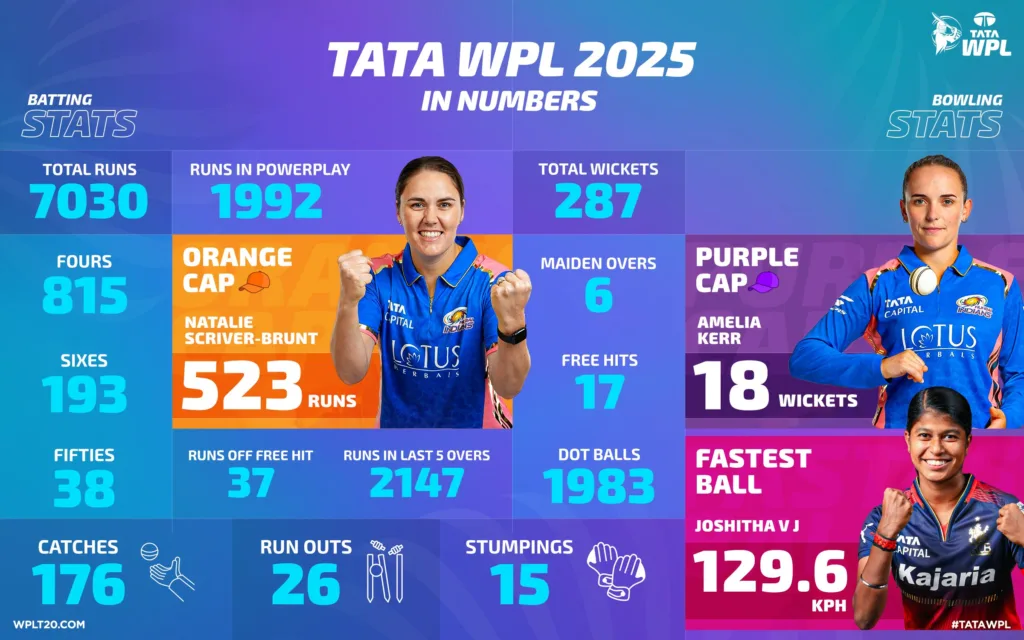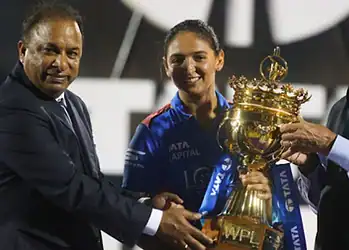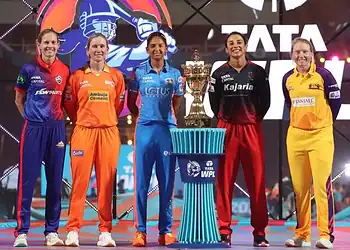The Women’s Premier League enters a new era with the WPL 2026 mega auction, scheduled to revolutionize franchise cricket strategies and team compositions. Set to take place on November 27 in New Delhi, this auction promises to be the most significant squad-building exercise since the league’s inception, with enhanced purse values, innovative retention rules, and the introduction of Right-to-Match (RTM) cards for the first time.
Table of Contents
WPL 2026 Auction Timeline and Key Dates
The road to WPL 2026 follows a carefully structured timeline designed to give franchises maximum strategic flexibility while maintaining competitive balance. The Board of Control for Cricket in India (BCCI) has set November 5 as the crucial retention deadline, giving teams just days to finalize their core squads before the mega auction.

The auction purse for each team has been set at ₹15 crore, representing a significant opportunity for franchises to rebuild their squads from scratch. This mega auction format means that all five teams—Mumbai Indians, Royal Challengers Bengaluru, Delhi Capitals, Gujarat Giants, and UP Warriorz—will essentially start fresh, retaining only their chosen core players.
Critical WPL 2026 Dates
| Date | Milestone | Significance |
|---|---|---|
| November 5 | Retention Deadline | Teams must finalize retained players |
| November 7 | Player List Submission | Franchises submit auction pool players |
| November 18 | Registration Deadline | Final date for player registrations |
| November 20 | Auction List Release | Complete player pool announced |
| November 27 | Mega Auction | Squad building in New Delhi |
Comprehensive Retention Rules and Player Categories
The WPL 2026 retention framework introduces sophisticated regulations designed to balance squad stability with competitive fairness. Each franchise can retain a maximum of five players, but these selections must adhere to specific compositional requirements that ensure both domestic and international talent representation.
Under the revised rules, franchises can retain a maximum of three capped Indian players, two overseas players, and two uncapped Indian players. The crucial stipulation is that if a team opts to retain all five players, at least one must be an uncapped Indian cricketer, promoting domestic talent development and creating opportunities for emerging stars.
Player Category Breakdown
| Category | Maximum Allowed | Special Conditions |
|---|---|---|
| Capped Indian Players | 3 | Core domestic talent |
| Overseas Players | 2 | International stars |
| Uncapped Indian Players | 2 | Mandatory if retaining 5 players |
| Total Retentions | 5 | Flexible composition |
Price Slab Structure and Purse Deductions
The WPL 2026 introduces a sophisticated pricing structure with fixed retention slabs that directly impact each franchise’s available auction purse. These predetermined amounts create financial discipline while allowing teams flexibility in actual player compensation.
The retention slabs follow a hierarchical structure: ₹3.5 crore for Player 1, ₹2.5 crore for Player 2, ₹1.75 crore for Player 3, ₹1 crore for Player 4, and ₹50 lakh for Player 5. These amounts represent the mandatory deductions from each team’s ₹15 crore purse, regardless of actual player salaries negotiated between franchises and players.
Retention Cost Analysis
| Players Retained | Purse Deduction | Remaining Budget | RTM Cards Available |
|---|---|---|---|
| 5 Players | ₹9.25 crore | ₹5.75 crore | 0 RTMs |
| 4 Players | ₹8.75 crore | ₹6.25 crore | 1 RTM |
| 3 Players | ₹7.75 crore | ₹7.25 crore | 2 RTMs |
| 2 Players | ₹6.00 crore | ₹9.00 crore | 3 RTMs |
| 1 Player | ₹3.50 crore | ₹11.50 crore | 4 RTMs |
Revolutionary RTM System Introduction
For the first time in WPL history, the WPL 2026 auction introduces Right-to-Match cards, adding a strategic dimension previously unseen in women’s franchise cricket. This mechanism allows teams to reclaim players who were part of their 2025 squads by matching the highest bid at the auction table.
The RTM allocation follows an inverse relationship with retention numbers—teams retaining fewer players receive more RTM opportunities. A franchise choosing maximum retentions forfeits all RTM rights, while those opting for minimal retentions can deploy up to four RTM cards strategically during the auction.
Strategic Implications for Franchise Planning
The WPL 2026 auction structure forces franchises into complex strategic calculations that balance immediate squad strength against long-term financial flexibility. Teams must weigh the value of retaining established stars against the opportunity to access a larger auction purse and additional RTM cards.

Mumbai Indians, having dominated the league with championships in 2023 and 2025, face the challenge of maintaining their winning core while adapting to new financial constraints. Royal Challengers Bengaluru, fresh from their breakthrough 2024 title under Smriti Mandhana, must decide whether to retain their championship nucleus or pursue aggressive squad rebuilding.
Franchise Strategic Options
| Strategy | Retention Approach | Advantages | Risks |
|---|---|---|---|
| Continuity Focus | 4-5 retentions | Squad stability | Limited auction flexibility |
| Balanced Rebuild | 2-3 retentions | Moderate purse + RTMs | Core disruption risk |
| Complete Overhaul | 0-1 retentions | Maximum auction power | Total squad uncertainty |
Impact on Player Market Dynamics
The WPL 2026 auction structure significantly influences player market valuations and bidding strategies. With each franchise operating under identical ₹15 crore constraints, the competition for premium talent intensifies, particularly for proven match-winners and emerging international stars.
Uncapped Indian players receive special protection through the ₹50 lakh minimum retention price, ensuring domestic talent receives fair compensation while encouraging franchises to invest in local development. However, teams can negotiate higher actual payments, with any excess amount deducted from their auction purse.
Tournament Structure and Scheduling
The WPL 2026 season is expected to begin on January 6 or 8, marking an earlier start than previous editions. This advancement necessitated moving the auction from December to November, creating a more compressed preparation timeline for franchises.
The tournament will maintain its successful round-robin format, featuring approximately 22 matches across four to five weeks. The top three teams after the league phase will qualify for the knockout stage, culminating in the grand final to determine the champions.
Competitive Balance and League Evolution
The mega auction format reflects the BCCI’s commitment to maintaining competitive balance across all five franchises. By limiting retentions and introducing RTM cards, the governing body aims to prevent long-term dominance by any single team while rewarding smart strategic planning.
The increased purse value and sophisticated retention rules signal the league’s maturation and growing commercial importance. With women’s cricket riding high on the success of India’s maiden World Cup triumph, the WPL 2026 auction represents a crucial moment for consolidating the sport’s momentum.
Expected Market Trends
| Category | Predicted Impact | Market Dynamics |
|---|---|---|
| Star International Players | Premium valuations | Intense bidding wars |
| World Cup Heroes | Massive demand surge | Multi-team interest |
| Emerging Domestic Talent | Increased opportunities | Higher base prices |
| Experienced Indian Players | Steady market value | Strategic acquisitions |
Technology and Auction Innovation
The WPL 2026 auction promises enhanced technological integration and streamlined processes. With only five teams participating and a maximum squad size of 18 players each, approximately 90 players are expected to go under the hammer, allowing for a potentially single-day completion despite the two-day allocation.
The auction’s efficiency reflects lessons learned from previous editions and the growing sophistication of franchise decision-making processes. Teams now employ advanced analytics, performance metrics, and strategic modeling to optimize their squad compositions within budget constraints.
Long-term League Development
The WPL 2026 auction represents more than squad building—it’s a statement about the league’s long-term vision and commitment to sustainable growth. The sophisticated rules framework, enhanced financial structures, and strategic innovations position the WPL as a global leader in women’s professional cricket.
The timing of the auction, coming immediately after India’s World Cup triumph, creates unprecedented market momentum and player valuations. International stars who performed well in the World Cup are expected to command premium prices, while domestic heroes from the victorious campaign will likely see significant value appreciation.

As franchises prepare for this pivotal auction, the combination of strategic complexity, enhanced budgets, and the introduction of RTM cards promises to deliver the most competitive and strategically nuanced squad-building exercise in WPL history. The decisions made on November 27 will shape not just the 2026 season but potentially the long-term trajectory of women’s franchise cricket in India.
Read More: Amol Muzumdar: The Real-Life Kabir Khan Who Led India to Maiden Women’s World Cup Glory
FAQs
When is the WPL 2026 mega auction scheduled?
The WPL 2026 mega auction will take place on November 27, 2025, in New Delhi, with teams required to submit their retention lists by November 5, 2025.
How many players can each franchise retain for WPL 2026?
Each franchise can retain a maximum of five players, with specific composition rules: up to three capped Indian players, two overseas players, and two uncapped Indian players, with at least one uncapped Indian if retaining all five.
What is the auction purse for each team in WPL 2026?
Each franchise has been allocated a ₹15 crore purse for the auction, with retention costs deducted based on the number of players retained (ranging from ₹3.5 crore for one retention to ₹9.25 crore for five retentions).
What are Right-to-Match (RTM) cards in WPL 2026?
RTM cards allow franchises to buy back players from their 2025 squads by matching the highest auction bid. Teams get 0-4 RTM cards depending on their retention numbers (fewer retentions = more RTM cards).
What are the price slabs for player retentions in WPL 2026?
The retention price slabs are: Player 1 (₹3.5 crore), Player 2 (₹2.5 crore), Player 3 (₹1.75 crore), Player 4 (₹1 crore), and Player 5 (₹50 lakh for uncapped Indian players).








